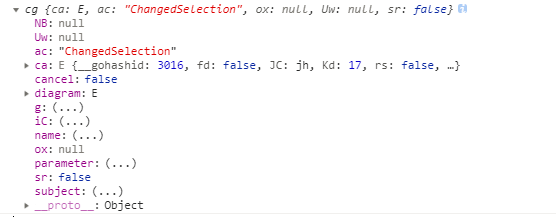BecauseI want the link to have its own default value:
myDiagram.linkTemplateMap.add("ASSISTENT_LINE",
g_(go.Link, {
selectionAdorned: true,
toShortLength: 0,
routing: go.Link.AvoidsNodes,//go.Link.Orthogonal,AvoidsNodes
reshapable: true,
resegmentable: true,
relinkableFrom: true,
relinkableTo: true
},
new go.Binding("points","points").makeTwoWay(),
new go.Binding("text","isinc").makeTwoWay(),
new go.Binding("text","length").makeTwoWay(),
g_(go.Shape, {
stroke: "rgba(0,0,0,1)",
strokeWidth: 2,
strokeDashArray: [5,2],
},
new go.Binding("strokeWidth","linkThickness").makeTwoWay(),
new go.Binding("strokeDashArray","dashes").makeTwoWay(),
new go.Binding("stroke","linkColor").makeTwoWay()),
g_(go.TextBlock, {
text:"DASH",
font:"bold 8pt helvetica, bold arial, sans-serif",
stroke:"#000000",
segmentOffset:new go.Point(0, 0),
editable: true,
_isNodeLabel: true,
cursor: "pointer"
},
new go.Binding("segmentOffset", "segmentoffset", go.Point.parse).makeTwoWay(go.Point.stringify),
new go.Binding("font","lableFont").makeTwoWay(),
new go.Binding("stroke","lableColor").makeTwoWay(),
new go.Binding("text","lable").makeTwoWay())));
